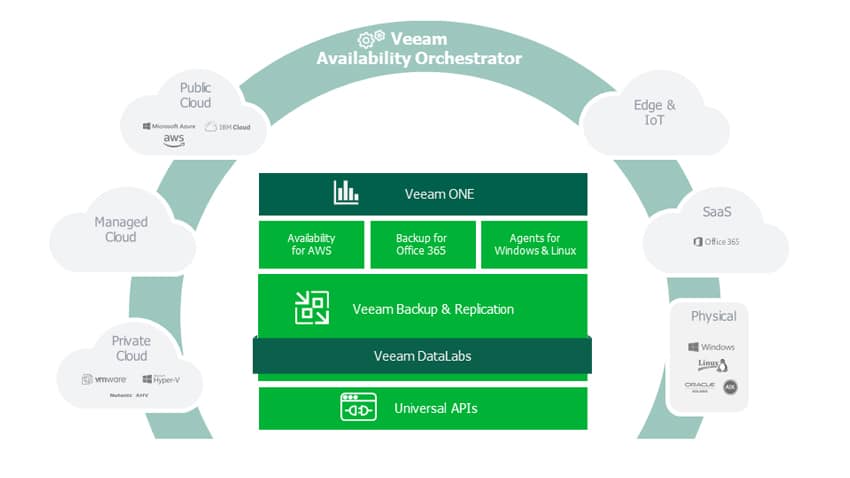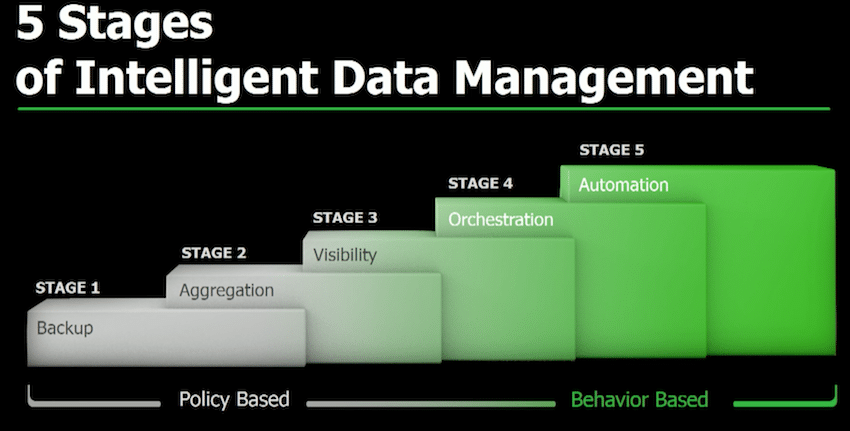Today at VeeamON 2018 in Chicago, IL, Veeam Software unveiled what it is calling its vision for the Hyper-Available Enterprise and its strategy to guide enterprise customers on their journey to Intelligent Data Management at massive scale. Three-quarters of the Fortune 500 use Veeam’s Hyper-Availability Solutions to ensure their business continuity, reduce risks and accelerate innovation. In an age where new technology such as AI, ML, IoT, and blockchain require massive scalability as they add to Big Data, companies need a way to ease the management of this data while ensuring availability.

Policy-based data management doesn’t cut it in a world of hyper-growth and hyper-sprawl. Customers need a new type of solution that leverages behavior-based data management making it more autonomous while maintaining mission critical data and delivering insights. Veeam posits that its Hyper-Availability Platform will tackle the above while helping its customers move to Intelligent Data Management.
When the word availability is used in the IT field it typically refers to business continuity and/or backup and recovery: in other words, whether the business stays up and running. Up until recently this definition fit nicely. However with the advancing technology and the growing amounts of data companies need more from availability. Veeam state that through Hyper-Availability data can evolve from backup and recovery solutions to more intelligent data that is able to respond instantly and appropriately to what actually happens anywhere across the enterprise data infrastructure. Data management needs to shift from a reactive method and protecting data to a proactive method of discovering and leveraging insights that add to business value.

According to Veeam, there are five stages on the journey to Intelligent Data Management for the Hyper-Available Enterprise:
- Stage 1, Backup: Back up all workloads and ensure they are always recoverable in the event of outages, attack, loss, or theft.
- Stage 2, Aggregation: Ensure protection and availability of data across multi-cloud environments to drive digital services and ensure the aggregated view of service level compliance.
- Stage 3, Visibility: Improve management of data across multi-cloud environments with clear, unified visibility and control into usage, performance issues, and operations; data management begins to evolve from reactive to proactive, preventing any loss of data availability through advanced monitoring, resource optimization, capacity planning, and built-in intelligence.
- Stage 4, Orchestration: Seamlessly move data to the best location across multi-cloud environments to ensure business continuity, compliance, security, and optimal use of resources for business operations. This requires an orchestration engine that enables enterprises to easily and non-disruptively execute, test, and document disaster recovery (DR) plans in a highly-automated fashion.
- Stage 5, Automation: Data becomes self-managing by learning to back itself up, migrate to ideal locations based on business needs, secure itself during anomalous activity, and recover instantaneously. This stage brings new levels of automation to enterprise data management via a combination of data analysis, pattern recognition, and machine learning.




 Amazon
Amazon